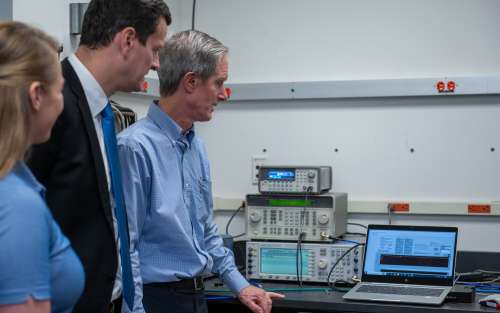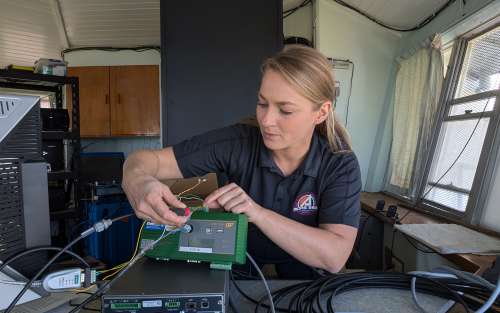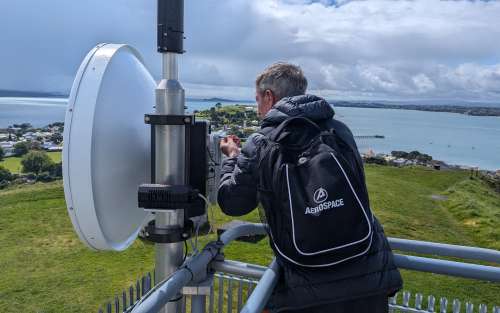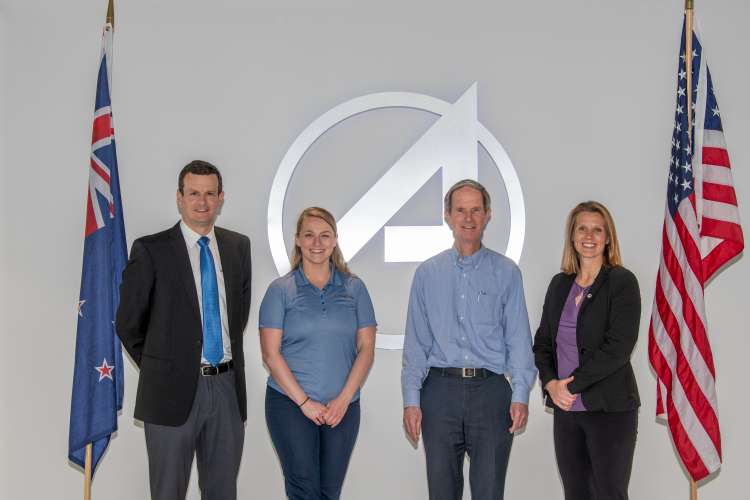The 150th anniversary of a seminal international space partnership was recently celebrated: the 1874 gathering of scientists from the United States, England, France and Germany to observe the transit of Venus from New Zealand’s fortuitous location in the Southern Hemisphere.

Participants in that historic collaboration, which helped calculate the solar parallax, could scarcely have envisioned the present-day reality of a global, interconnected space community in which data and technology sharing among allies is vital. The legacy of the Transit of Venus Expedition echoes through today as the U.S. and New Zealand remain close allies through partnerships such as the Five Eyes intelligence alliance, the Combined Space Operations Center and the Artemis Accords.
An experiment recently launched by the New Zealand Defence Force (NZDF) and facilitated by The Aerospace Corporation helps extend the scientific legacy at the foundation of this partnership. The experiment, funded by Space Systems Command International Affairs (SSC/IA), a division of the U.S. Space Force (USSF), aims to improve and expand weather data availability for U.S. and New Zealand’s future space-based V-/W-band communication systems.
“We worked in the past with Aerospace and with Space Systems Command on the protected tactical waveform and also on the integration of the protected tactical waveform into our Wideband Global SATCOM terminals,” said Dr. Branislav Jovic of NZDF’s Defence Science and Technology unit. “We are glad to continue our collaboration with Aerospace and SSC/IA.”

Aerospace devised a method to test a non-modulated V-/W-band signal over a range of up to 30 kilometers. The experiment focuses on the V- and W-bands, which are microwave frequency ranges commonly utilized in satellite communications, millimeter-wave radar research and military radar applications for targeting and tracking. While V-/W-bands can provide higher data rates in higher frequencies than the MILSATCOM community normally uses, they are also susceptible to atmospheric degradation when the wavelength is similar in size to rain droplets. The experiment Aerospace, SSC/IA, and the Air Force Research Laboratory (AFRL) devised aims to model and predict atmospheric propagation loss for millimeter-wave communications systems, since the amount of power received by the experiment’s receiver will be correlated with the weather conditions.
“Rain rate, frequency, storm cell diameter and climate classification are all more severe in New Zealand,” said Ashley Kowalski, project leader for International Programs at Aerospace. “Testing these signals in New Zealand will advance stakeholders’ understanding of the effects of severe weather on high-frequency communication systems and provide an expanded set of weather data to help design and develop future satellite communications systems.”
Collaborating for Security in a Contested World
The joint efforts of SSC/IA, NZDF, AFRL and Aerospace demonstrate the value of international cooperation in space and defense, illustrating how nations can leverage their collective expertise to address global challenges. Ultimately, the success of the V-/W-band experiment is expected to pave the way for more resilient satellite technologies.

“The U.S. Space Force is actively pursuing partnerships with allied nations to strengthen space defense capabilities and to create systems that are allied by design,” said Col. Elisabeth White, military deputy for International Affairs at SSC/IA. “In support of that goal, our mission here at SSC/IA is to integrate allies into future space capabilities and architectures to enable and increase deterrence, interoperability, resiliency and scale.”
The collaboration between the United States and New Zealand is a testament to the enduring power of allied teamwork and the value of jointly developing and testing advanced technology to address emerging threats and ensure collective security in an increasingly contested environment on Earth and in space.
“Aerospace is working with more than 30 allied and partner nations to support the U.S. Government and expand space collaboration globally,” said Jamie Dronen, principal director of International Programs at Aerospace. “Cooperation with international partners and the integration of resilient space architectures and innovative capabilities across commercial, civil, and defense space will be critical to our collective future mission success.”

